Disclaimer: This post is a very deep post. It contains my personal emotional and thought provoking experiences of visiting The Jewish Museum in Berlin. I write about this because this visit has impacted me a lot and I would love to share this because this blog is about my art work and my life as an artist. My art is often very emotional and a lot of my art work is influenced by experiences like this one. I would like to ask to keep any comments respectful – this is a very sensitive topic and I must say I am a bit scared to write about it.
I will not tolerate any hate-related comments. If you feel the need to do so- you are welcome to go to a far remote place in blog land and never ever return back to this website – because then this blog is clearly not written with you in mind!

A couple months ago when Julie and I had already scheduled her visit to me, I heard about the Exhibition “The Whole Truth…Everything you always wanted to know about Jews” in The Jewish Museum Berlin. Many controversial newspaper articles can be found about this exhibition especially the part of the exhibition which became known as the “Jew in a Box”. In the exhibition a Jewish Person sits in a kind of a clear box and can be asked questions about Jews and Judaism. When Julie and I heard about it and read the articles we started discussing this a bit. It started as a discussion between an American and a German, a Jew and a non-Jew, two friends striving to understand cultural, historical and religious differences. We decided we would have to go ourselves to Berlin in order to have an opinion about this exhibition. And so we went.

The building itself is very impressive – there is an old part of the building as well as a new one built by architect Daniel Libeskind. I cannot remember when an architectural building had such a strong emotional impact on me.
Throughout the building Libeskind has created so called voids, empty spaces which represent the absence of Jews from German society.
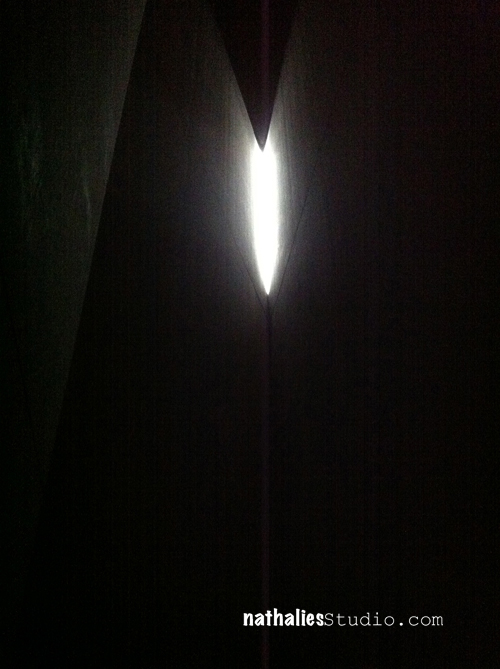
One void is called “Holocaust Tower” . It is very oppressive and moving. It’s a 24 meter/78.7 foot high shaft of concrete illuminated by a single source of light.
The other void which left an unbelievable emotional and physical impact on me was a Memory Void containing an installation titled Shalekhet (Fallen Leaves) by Menashe Kadishman. “Over 10,000 open-mouthed faces coarsely cut from heavy, circular iron plates cover the floor”.
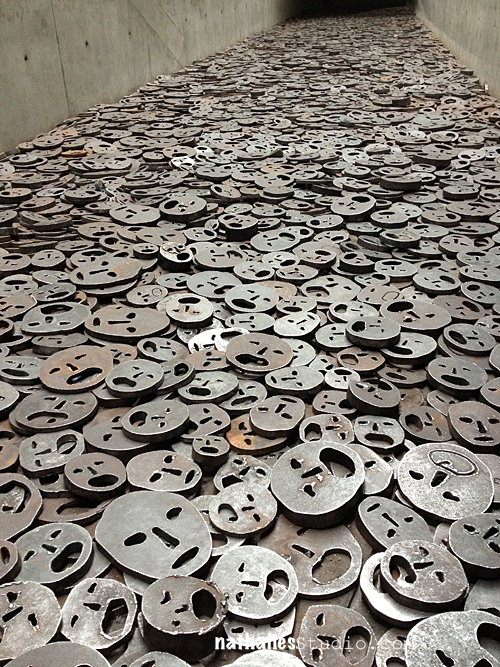
Upon nearing this void Julie and I heard this incredible loud noise which from a far away distance sounded first as a remote noise in a very busy cafe where dishes were clanking together but once we came closer and closer the sound was getting painful and shrill. Visitors are encouraged to walk into the void which turns darker and darker in the end.
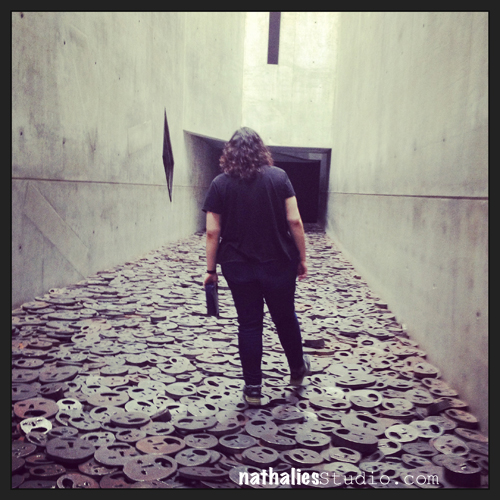
I started stepping on the first faces and I stopped right away, I felt sick to the stomach and could not walk a single step further. I think I have never had this kind of reaction to any art I have ever seen and experienced before.

The first time we went through the Special Exhibition the clear box was unattended. So we decided to come back later again. At the end of the exhibition we found this huge wall full with post-its where visitors were asked to leave their comments and questions about the exhibition. It was another deep emotional moment to read some of them – in all languages, by all kinds of different people , age groups, countries and faiths. Some post-its were rude and made me swallow – like one in German that said: “None of my answers were answered by this exhibition and I will continue to have my prejudices” ,- many were written in a very narrow minded religious way – but there were also some like these:
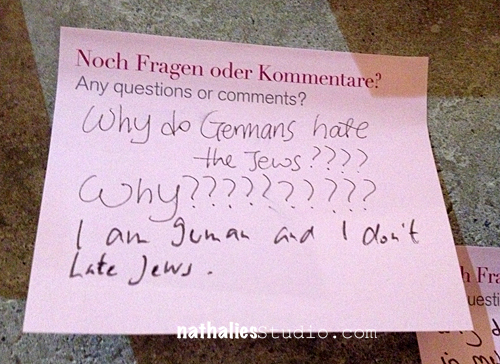
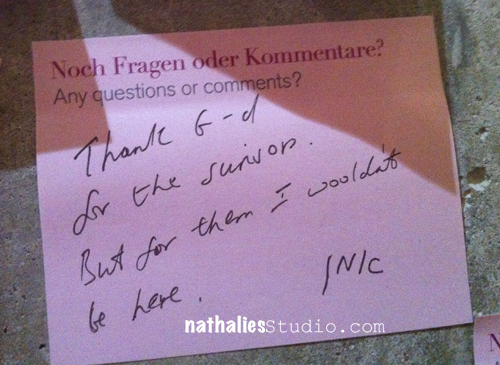
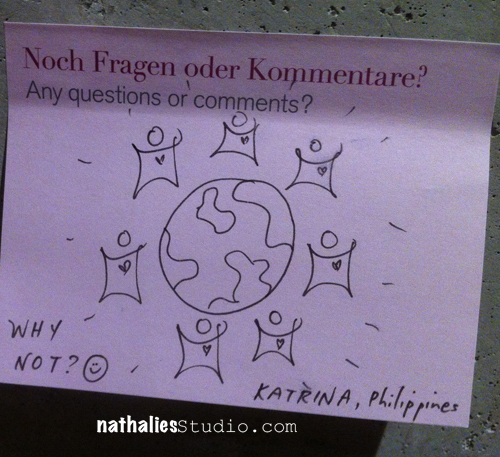
Later we came back and talked to the woman sitting in the clear box. Julie and I started talking to her and my first question was “How do you feel sitting in this box” and “What was your motivation of volunteering for this” . The answers and stories about her experiences were very touching. From outraged Germans that have ties to Nazi-perpetrators to outraged Jewish people being hurt that she would sit in a box like in a zoo, from Jewish women from the U.S. starting to cry because they could not grasp that a jewish woman would live in Germany to young people asking basic questions about the religion. She told us she had wanted to do this to get to know how people in Germany feel about it because she always felt being asked many a questions anyway when she told her friends she was jewish. What she didn’t expect was how emotionally draining this whole experience would be.
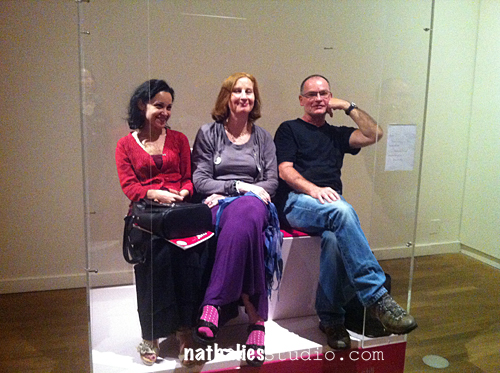
During our conversation many other people joined our group from all countries, jews and non-jews and we had a very lively and very interesting discussion. It was a wonderful experience the way how we all stood there and talked with each other. And then somehow the amazing woman was not alone in the glass box anymore. She was accompanied by a friend from South America and a man from Germany who said he never makes public to be jewish out of fear for the reaction. I know it is hard to grasp if you haven’t been there or if you are full of prejudices about this exhibition anyway- but this picture and this moment was a moment of peace and made me feel that there is hope for this world.
During and after the visit Julie and I spent many hours talking about our experiences in the museum, thoughts and feelings. It was very deep and open and honest. It also reminded me that art is something that provokes thoughts and feelings. As mentioned several times, this visit in the Jewish Museum has provoked many thoughts and feelings in very different ways in me, and sharing this with a friend is an experience I will always cherish.
Loves

Nat
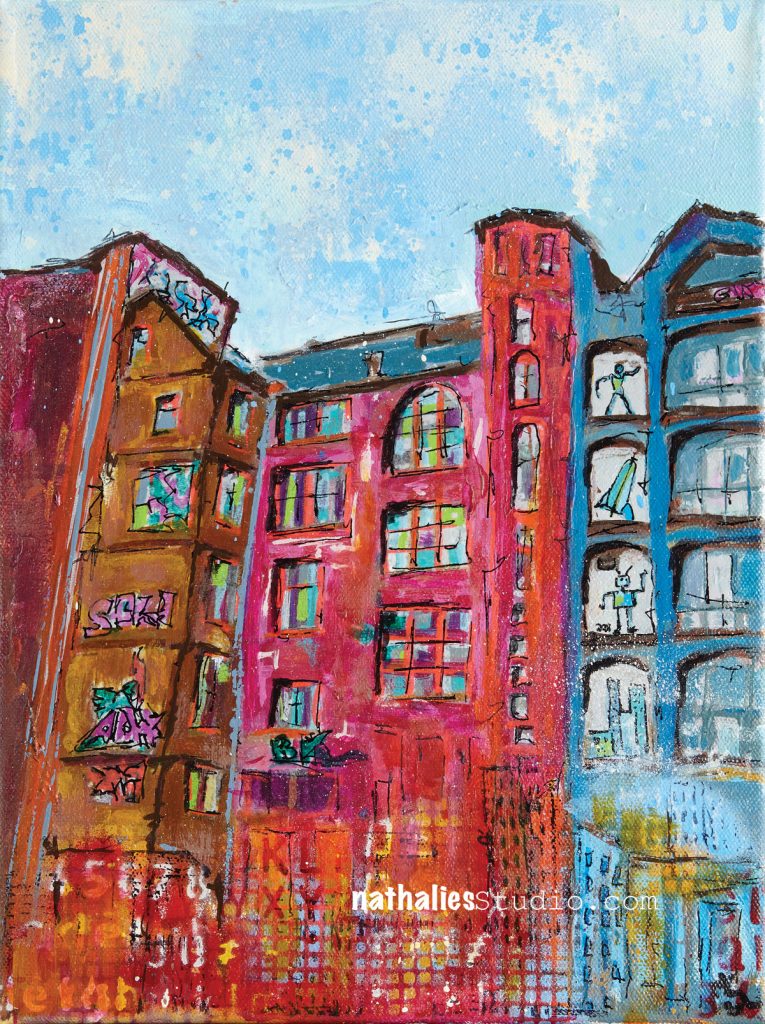












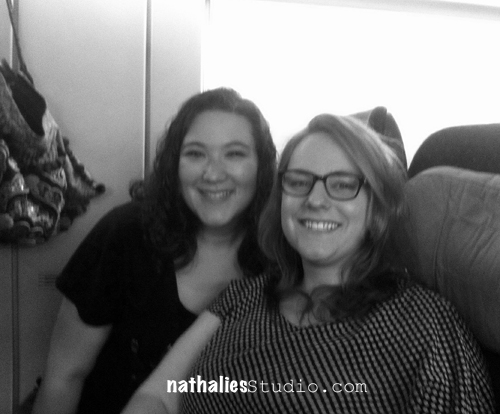
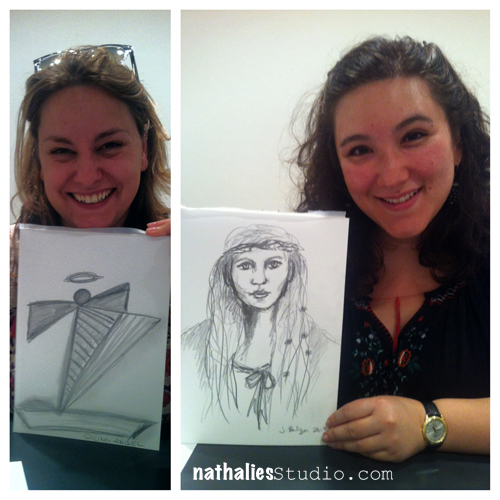
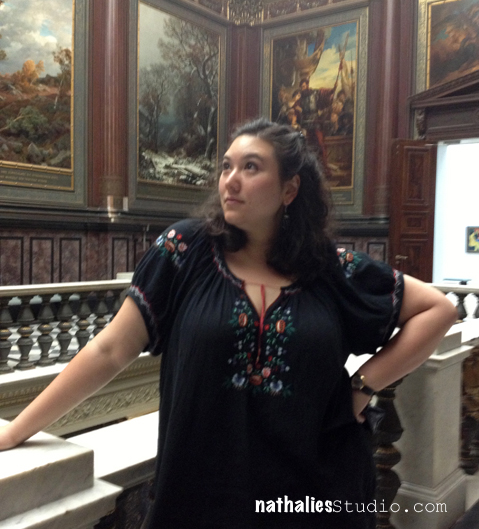
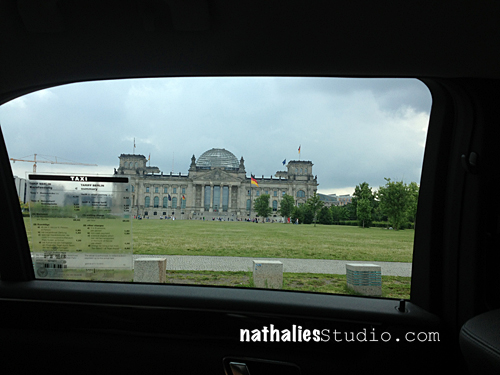
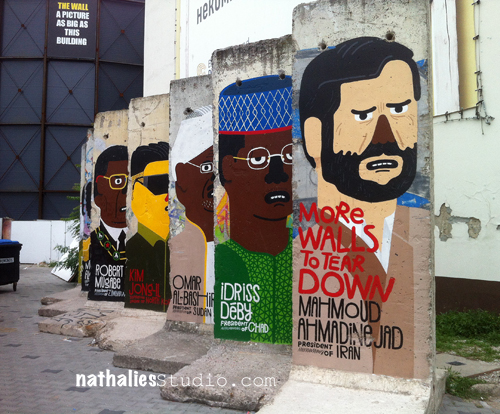
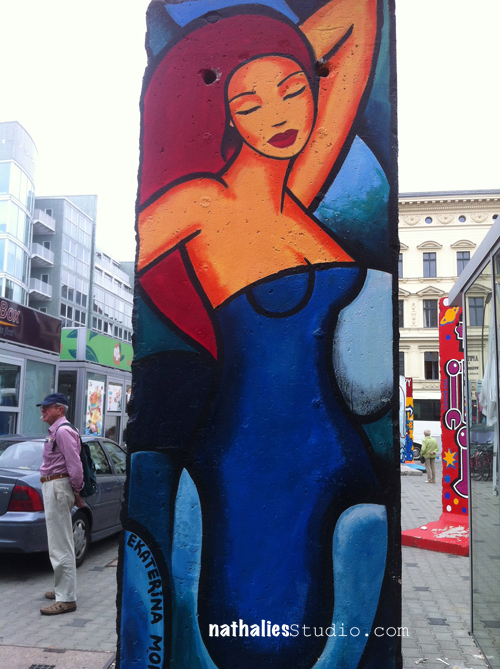
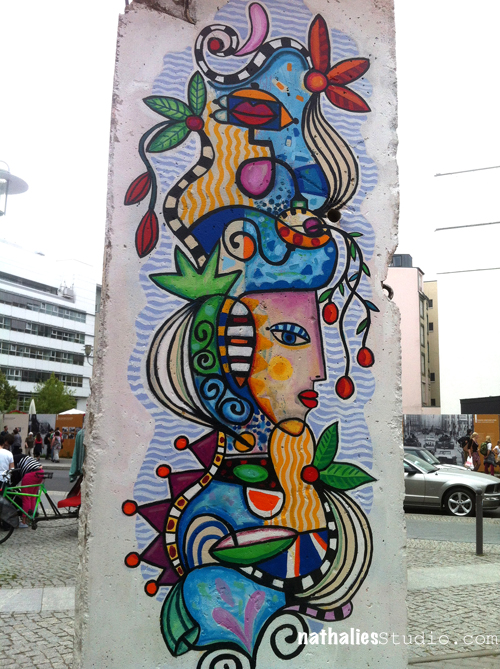
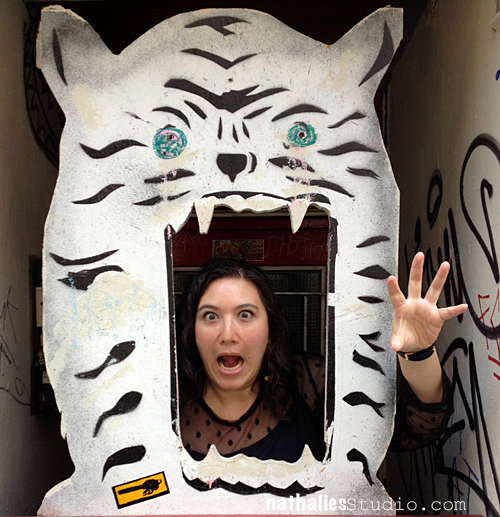
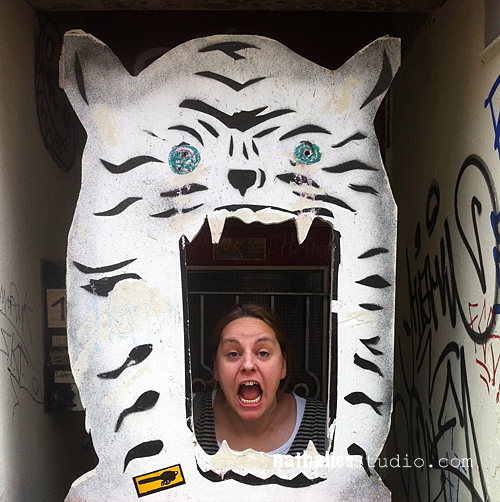

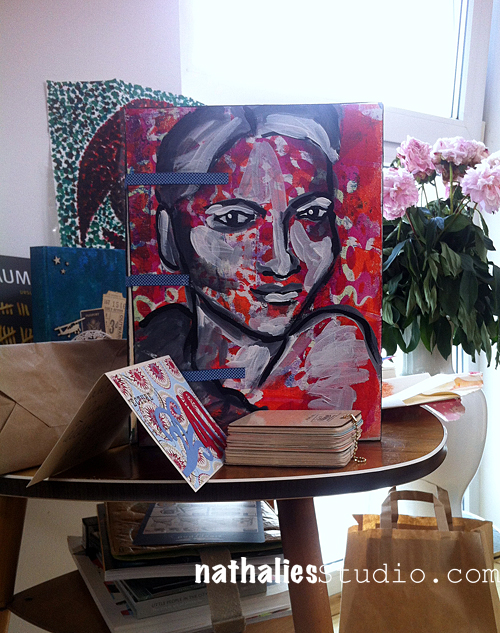
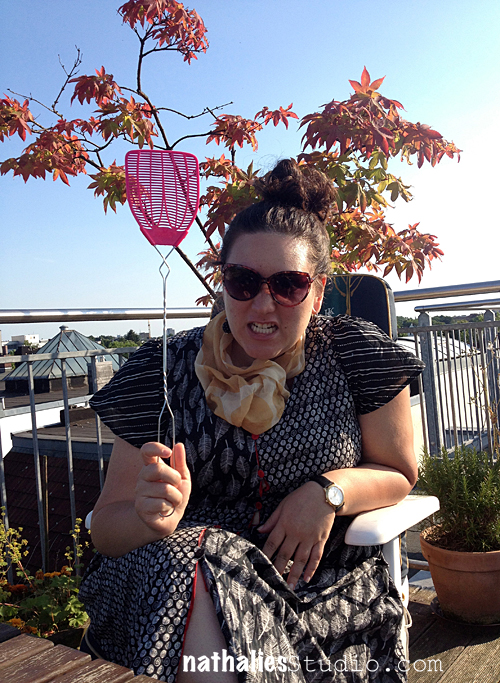
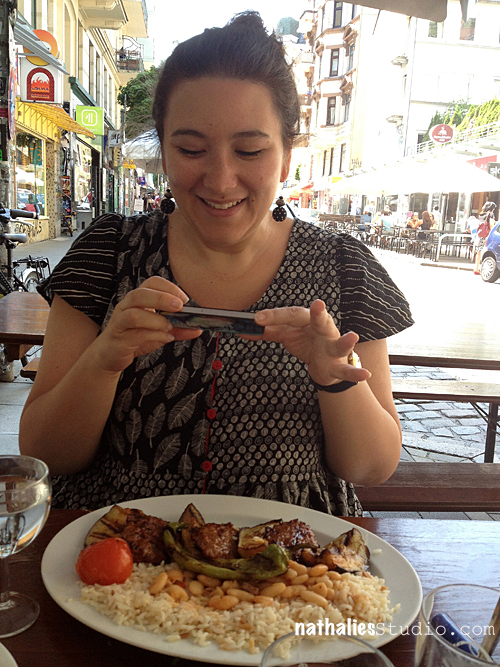
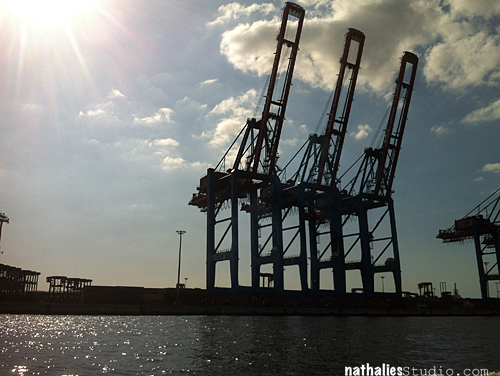

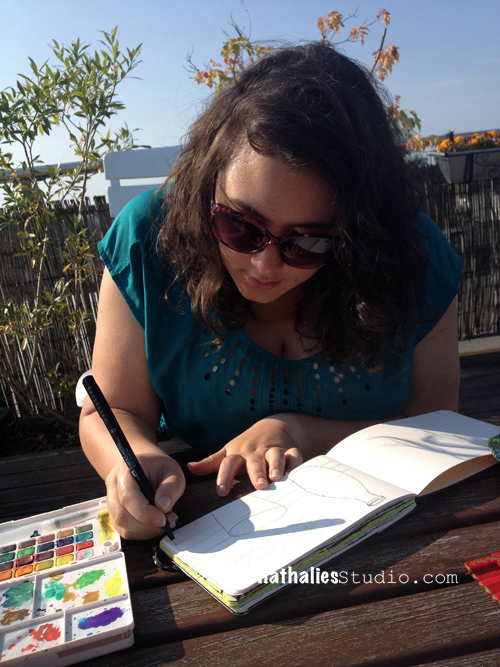
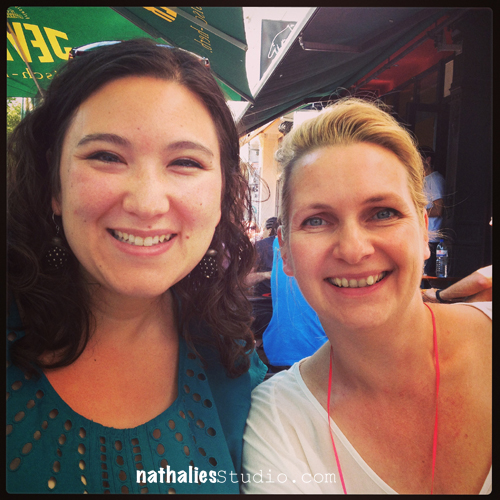

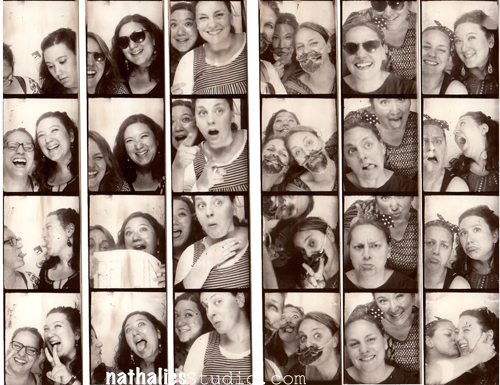
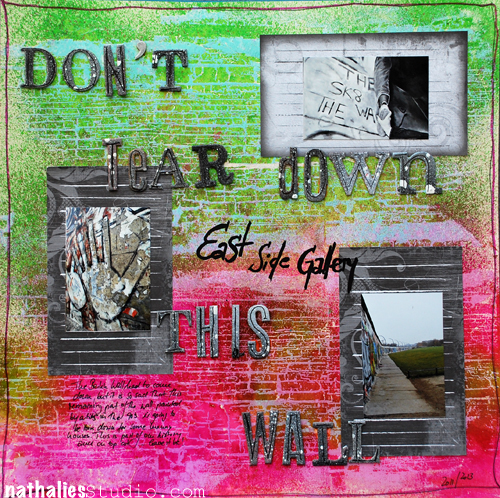
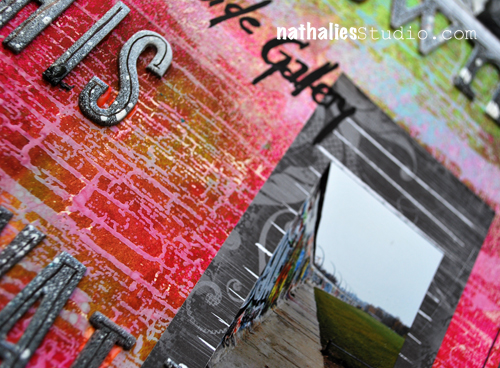
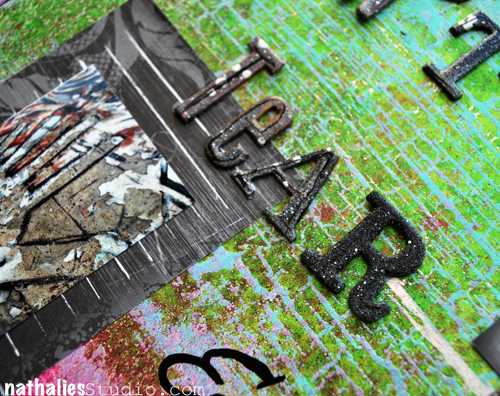

A very powerful article. I’m Jewish and live in America. I’m proud of you…that you posted this….We must teach the world and remind them to “never forget”.
The Fallen Leaves…brought tears to my eyes. My grandfather was one of 8 siblings. He’d come to the US many years…some of family were able to come and yet, some went back to Germany and were lost in the Holocaust.
Reply